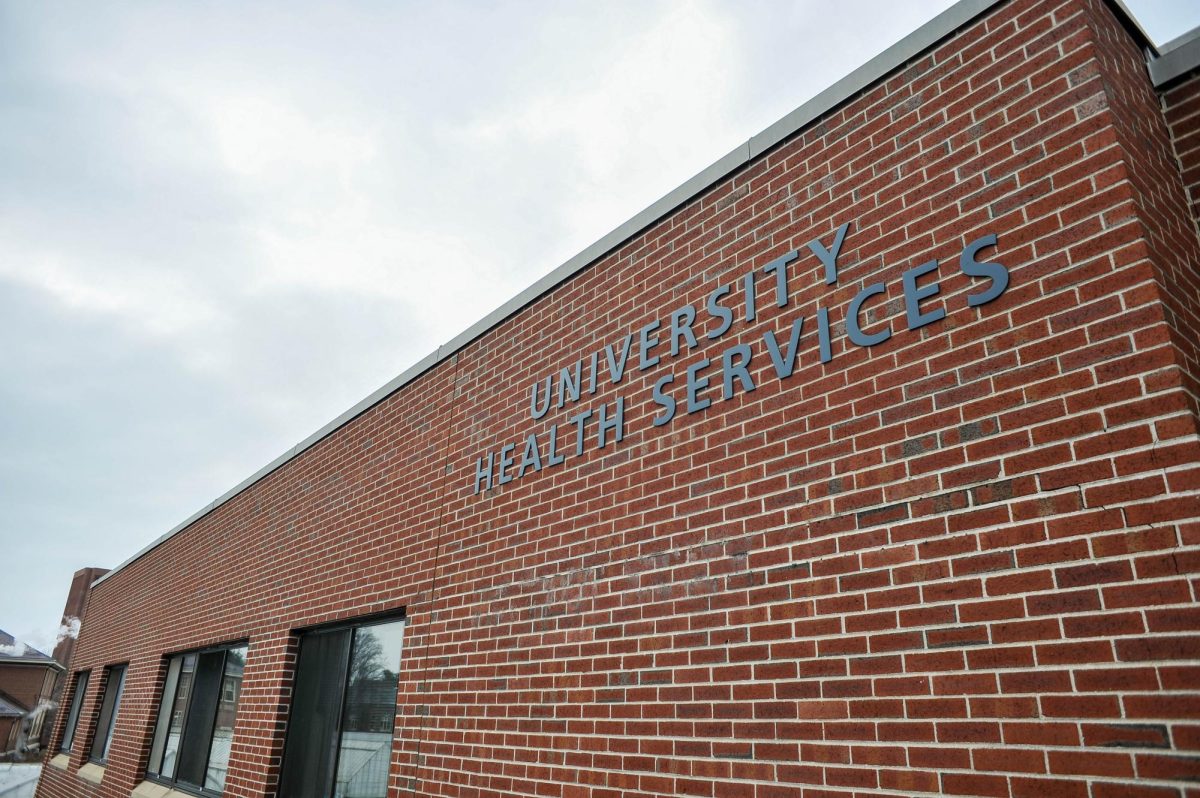
An hour’s drive south of the Pioneer Valley will lead you to a battlefield. Last fall, a group of transgender students at Wesleyan University tore down gendered bathroom signs and replaced them with ones that read, “All Gender Restroom.” The incident sparked a campus-wide debate, fines from the Student Judicial Board and mixed reactions from alumni. On college campuses across the country, student activists are dismantling what Sheila Cavanagh dubs an “architecture of exclusion,” more commonly known as gendered bathrooms.
Wesleyan, nicknamed “Diversity University,” is a college like no other. The school introduces gender-neutral pronouns at new student orientation, and it doesn’t take much to incite campus-wide protests. Just last year, for example, students marched to support the rights of cafeteria employees and custodians. Despite the school’s accepting culture, a few activists who call themselves the “Pissed Off Trans People” haven’t felt a warm welcome. One student bluntly states that they can’t study at the school’s library because of its gendered restrooms. Another has been threatened with violence from their peers. These students believe that “gender-segregated bathrooms create uncomfortable and potentially dangerous situations for trans and gender-variant presenting people.”
In line with the school’s progressive spirit, they’ve decided to move the issue to the foreground of the community’s attention. But what does it say about contemporary queer rights when these activists – students at one of the country’s most progressive universities – feel the need to tear down bathroom signs to get their peers and administrators to pay attention? For starters, it means that the further you get from “Diversity University,” the worse things get.
Gender divisions don’t just hide in our pronouns, and they don’t merely tuck themselves away in marketing. They’re produced even by the designs of our public buildings. If you don’t adhere to the gender binary, expect stares, verbal insults and even violence when out in public. More than half of a nation-wide survey’s transgender respondents report receiving verbal harassment and mistreatment in public accommodations. Twenty-nine percent report harassment or disrespect from police officers.
When a non-transgendered person enters a gender-neutral bathroom, they may experience discomfort. When a transgendered person enters a gendered bathroom, they experience fear of public shaming, verbal harassment, anger, insults, violence and even death. At such sites, people comfortably inside the gender binary feel the right to police anyone who doesn’t fit the mold.
According to the Massachusetts Commission on Lesbian, Gay, Bisexual and Transgender Youth Equal Access Bill, one transgender youth wondered at a recent hearing, “Which bathroom do I go to? … If I go to the women’s, then my friends are asking me, ‘Why are you going to that one? Aren’t you a boy?’ If I go to the men’s, then they’re going to look at me. ‘Aren’t you a girl? You look like a girl.'” Those are comments from friends, but when they’re from strangers they’re often worse. Just ask Jalisa Griffen and her boyfriend, who were told they were “going to the wrong bathroom” at a local McDonald’s. The customer called them “f*****g f*****s” before slashing one in the face and body with a razor.
At the mere thought of using gender-neutral bathrooms, a non-transgendered person may express discomfort. Such a feeling seems perfectly reasonable, since Americans take gendered bathrooms for granted. In 1887, Massachusetts passed the first law of its kind, one that separated men and women into their respective public bathrooms. Though uncommon before the 19th century, such regulations became the norm when other states passed similar laws in the 1920s and 30s. To this day, plumbing regulations in Massachusetts limit the number of gender-neutral bathrooms a building can have.
A common objection to the gender-neutral solution is that it’s just too uncomfortable. We’ve been in gendered bathrooms our whole lives, after all. At a recent forum held at Wesleyan, a student-run blog transcribed a student’s experience with a gender-neutral bathroom. “It was uncomfortable at the time, but it’s something that I got used to,” the student said.”
The leader of a focus group at the University of Washington pushed for the reasons behind this popular discomfort over gender-neutral accommodations. More than any other reason, her participants cited their intuitions. One respondent, for example, could only produce a noise of unease when toying with the possibility of using gender-neutral bathrooms. Given these intuitive objections, the author remarked that “the segregated public bathrooms stands in for gender itself … and threats to segregation represent threats to the recognition of gender differences – a recognition to which many people retain powerful commitments.” The architecture of exclusion receives such widespread support because it serves to perpetuate gender differences we’d rather obey than question.
But I’m asking you to question those differences, and it doesn’t require anything radical. When transgender students pay to support the library’s budget, they should be allowed to borrow books and study in the same building. When a McDonald’s customer orders some chow, they shouldn’t expect a razor blade in the face. The most extreme solution would be to convert all restrooms to gender-neutral status. But I get it – we love our sacred gender binary too much.
I hope you’ll at least agree with a modest request – the added option of a gender-neutral bathroom alongside the traditional pair of men’s and women’s. Violence, discomfort and harassment would decrease, and a consistently mistreated segment of the population could finally pee in peace. Consider adding a gender-neutral alternative to your normally scheduled, gendered lifestyle. It might just save a few lives.
Brandon Sides is a Collegian columnist and can be reached at [email protected].


















Masterofmydomain • Apr 7, 2014 at 5:17 pm
This is one of the sillier editorials printed in the Collegian in awhile. We had Unisex bathrooms in my dorm in Southwest. Not officially, but since each floor had only one bathroom, in effect this is what occurred. For the most part it was not an issue. The REAL discomfort is not for the 1 transgendered person out of 1 million, but for guys and gals taking a dump next to each other. Showers and sinks are not a big deal, but for everyone’s sake, there should be separate bathrooms to just do your business. It’s just human nature.
Sarah • Apr 4, 2014 at 5:57 pm
I agree John, someone who is a survivor of violence may very well want to see their right to use a gender specific bathroom respected. It is just as real and profound a concern as any.
Brandon Sides • Apr 3, 2014 at 10:41 pm
A note: “transgendered” is not my original wording, and I do not agree with that wording.
Hi, John. I’m getting this information from the nation-wide surveys that reveal that trans* and gender-variant people are disproportionately harassed in public spaces.
One such survey can be found here: http://transequality.org/PDFs/Executive_Summary.pdf
I did not argue for having only gender-neutral bathrooms; I argued for the addition of some gender-neutral bathrooms. In other words, gender-neutral bathrooms would be there if you’d want them, but you wouldn’t have to use them.
John • Apr 2, 2014 at 9:37 pm
I apologize as I missed the part of your article which addressed my earlier point. You stated: “When a non-transgendered person enters a gender-neutral bathroom, they may experience discomfort. When a transgendered person enters a gendered bathroom, they experience fear of public shaming, verbal harassment, anger, insults, violence and even death.” Where are you getting this information from? Aren’t you being hypocritical to dismiss the fear and anxiety of gendered people from sharing a bathroom as just discomfort?
John • Apr 2, 2014 at 9:30 pm
Have any of these people considered the discomfort of the people who identify as a single gender when thinking about having unisex bathrooms?